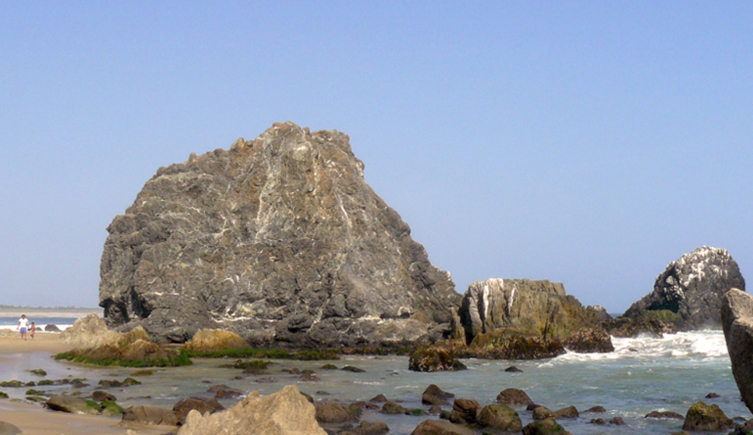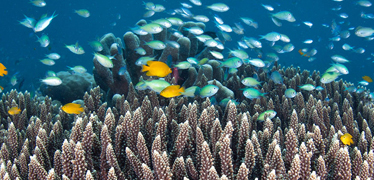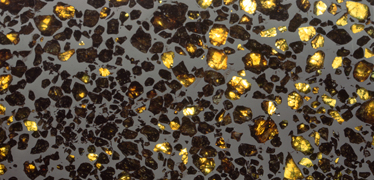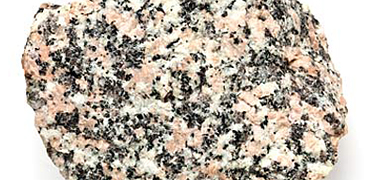Mafic and ultramafic rocks in southern Mexico

Boulder showing mafic and ultramafic intrusion along the Guerrero coast, Southern Mexico
Project summary
- Focus: exploring mafic and ultramafic rocks on the Guerrero coastline for potential economic exploitation
We are exploring the geodynamics of mafic and ultramafic rock complexes in southern Mexico and the economic potential for their exploitation.
This multi-disciplinary project involves:
- detailed geological mapping
- structural and micro-structural study
- mineral dating using uranium-lead and argon-argon techniques
- geochemistry of whole rocks and single minerals
- rhenium-osmium, strontium, neodynium and lead isotopic studies
This data will allow us to establish the origins of these rocks and the influence of crustal melting and subduction processes.
Mafic and ultramafic rocks in Mexico
Southern Mexico is made up of several island arcs, originally separated by trenches, which collided and deformed during the Laramide orogenesis (~80-35 million years ago).
Along the Guerrero coast, Mesozoic-Early Tertiary granites are intruded by:
- mafic rocks, such as gabbro and hornblendite
- ultramafic rocks, including wehrlite, dunite and pyroxenite
The origin of these rock complexes is unclear, but their association with valuable metallic mineral deposits makes them an important focus for research.
The Trans-Mexican Volcanic Belt (TMVB)
The TMVB stretches 1,000km along the southern edge of the North American plate, generating a wide range of igneous products and processes.
The TMVB is an active continental arc that formed around 11 million years ago. The variable composition of its igneous products and volcanic style make the TMVB a particularly interesting subduction zone to study.
External collaborators
- Dr Luca Ferrari
Universidad Nacional Autónoma de México - Teresa Orozco
Universidad Nacional Autónoma de México - Michelangelo Martini
Universidad Nacional Autónoma de México - Margarita Lopez
CICESE, Ensenada, Mexico - Annalisa Tunesi
University of Milan - Bicocca
Related information

Origins, evolution and futures research
We study the Earth's origins, environment and the evolution of life

Mineral and planetary sciences research
Investigating the origins and evolution of Earth and our solar system

Rock collection
The Museum’s rock collection consists of approximately 123,000 samples collected from around the world